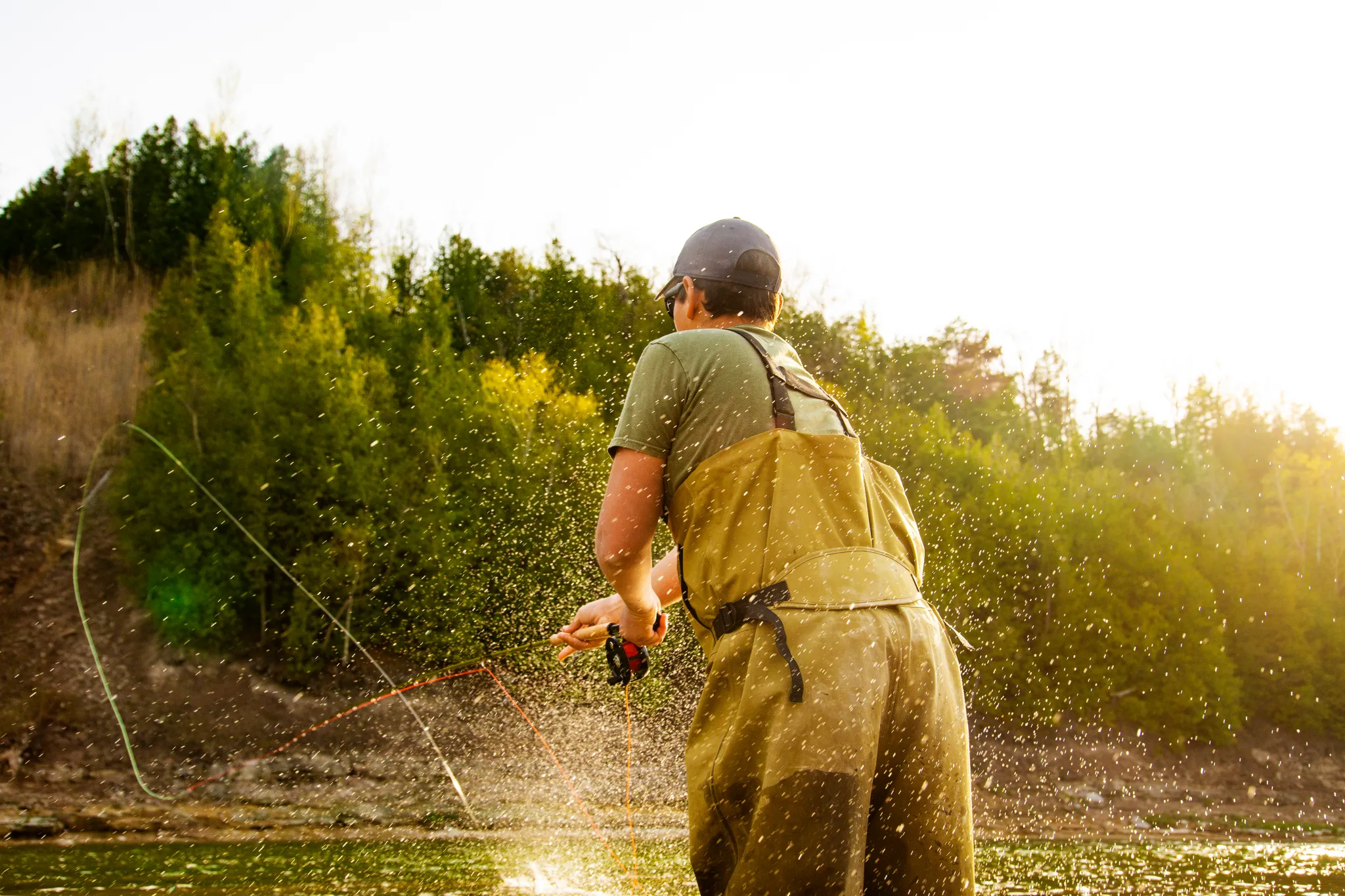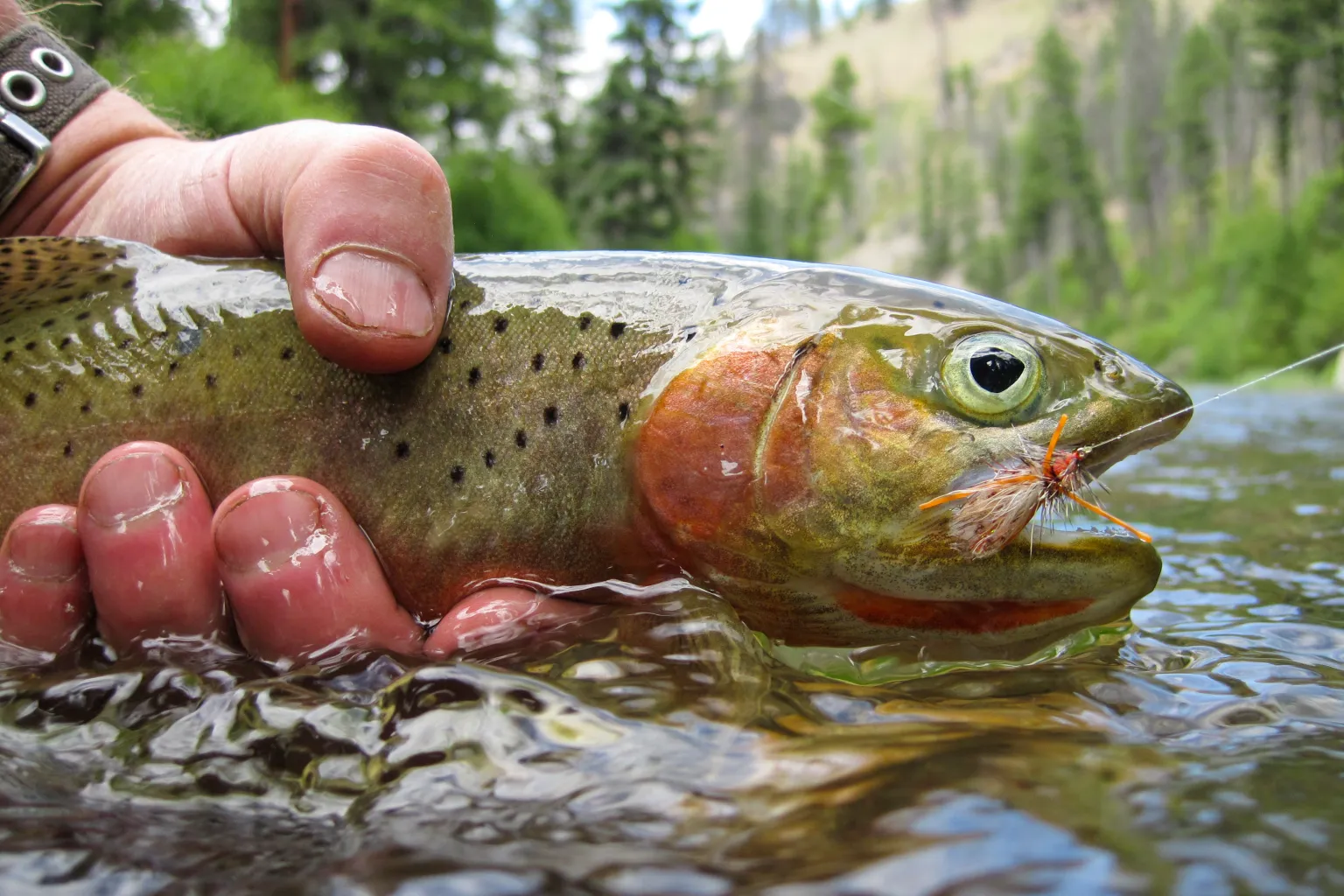Fly fishing enthusiasts often marvel at the graceful forward cast, but there’s another essential technique that can prove invaluable in certain situations: the roll cast. While the traditional overhead cast is iconic, mastering the roll cast opens up new possibilities, particularly in tight quarters where a back cast isn’t feasible. Let’s delve into this technique and explore its simplicity and versatility.
Understanding the Roll Cast Unlike the conventional overhead cast, which relies on aerial back casting to load the rod, the roll cast utilizes surface tension created by the line’s contact with the water. By executing a forward roll casting stroke, anglers can generate a loop that propels the line forward. With no need for an aerial back cast, the roll cast shines in confined spaces, allowing anglers to keep their flies in the water and reach fish in challenging environments.

Benefits and Applications The roll cast isn’t just for show—it’s a practical technique that can be applied in various fishing scenarios. Whether you’re nymphing or presenting dry flies, the roll cast offers a reliable method for delivering your fly precisely where you want it. Unlike false-casting weighted flies and indicators, which can lead to tangles, the roll cast simplifies the casting process, making it ideal for anglers of all skill levels.
Tools for Success While the roll cast is straightforward, proper technique is essential for success. Fortunately, you don’t need fancy equipment to master this technique. Any fly rod and reel combo paired with a suitable fly line can execute a roll cast effectively. For beginners or those looking to hone their skills, practicing with a tapered leader and lightweight flies can build confidence before progressing to heavier rigs.
Executing the Roll Cast: Step-by-Step Guide
- Prepare: Form a D-loop. Position your rod and reel correctly, ensuring the rod tip is just behind your body’s plane. Create a D-loop shape by bending your casting arm at the elbow, with the reel level with your ear. Slowly lift the rod, dragging the line across the water’s surface to straighten it. Pause briefly to anchor the line, providing tension for the forward casting stroke.
- Perform the Roll Cast. Visualize swatting a fly with precision. Begin the casting motion slowly, gradually accelerating before coming to a crisp stop. This action transfers energy from the rod to the fly line, propelling it forward. Focus on maintaining a smooth, fluid motion, avoiding excessive force or dropping the rod too low. With practice, you’ll achieve a seamless roll cast, delivering your fly with accuracy and efficiency.
- Mind Your Line Placement. To avoid tangles and ensure a clean presentation, keep your forward casting stroke parallel to the line on the water’s surface. Crossing the line’s path can lead to overlapping and potential snags. Aim to release the fly to the inside of the anchored line, directing it away from your body and minimizing the risk of entanglement.

When to Utilize the Roll Cast Whether you’re fishing in tight, brushy spots or need to redeploy your fly quickly, the roll cast is a valuable tool in your angling arsenal. Its versatility extends beyond confined spaces, offering solutions for various casting challenges. As you become more proficient, you’ll uncover new applications for this simple yet effective technique, enhancing your fly fishing experience.
Mastering the roll cast opens doors to new opportunities and enhances your angling capabilities. By practicing proper technique and understanding its applications, you’ll gain confidence in navigating diverse fishing environments and reaching elusive fish with precision. So, embrace the simplicity and effectiveness of the roll cast—it’s your ticket to success on the water.
Images/Source: WideOpenSpaces





